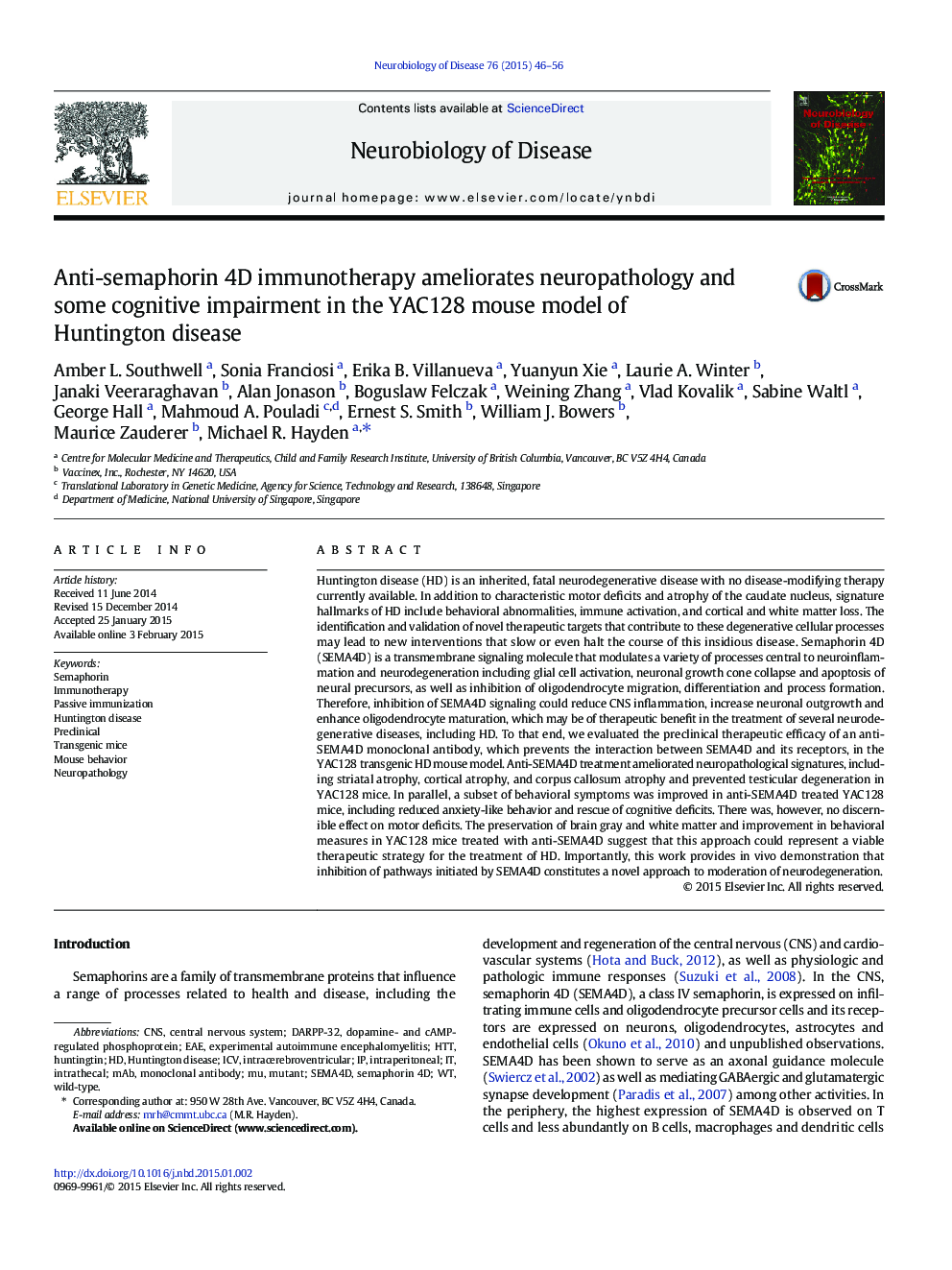| Article ID | Journal | Published Year | Pages | File Type |
|---|---|---|---|---|
| 6021727 | Neurobiology of Disease | 2015 | 11 Pages |
â¢The semaphorin 4D signaling pathway is dysregulated in HD and HD model mice.â¢A therapeutic antibody inhibits SEMA4D signaling by blocking receptor interaction.â¢Î±-Sema4D treatment ameliorates anxiety and cognitive deficits of HD model mice.â¢Î±-Sema4D treatment prevents loss of brain gray and white matter in HD model mice.
Huntington disease (HD) is an inherited, fatal neurodegenerative disease with no disease-modifying therapy currently available. In addition to characteristic motor deficits and atrophy of the caudate nucleus, signature hallmarks of HD include behavioral abnormalities, immune activation, and cortical and white matter loss. The identification and validation of novel therapeutic targets that contribute to these degenerative cellular processes may lead to new interventions that slow or even halt the course of this insidious disease. Semaphorin 4D (SEMA4D) is a transmembrane signaling molecule that modulates a variety of processes central to neuroinflammation and neurodegeneration including glial cell activation, neuronal growth cone collapse and apoptosis of neural precursors, as well as inhibition of oligodendrocyte migration, differentiation and process formation. Therefore, inhibition of SEMA4D signaling could reduce CNS inflammation, increase neuronal outgrowth and enhance oligodendrocyte maturation, which may be of therapeutic benefit in the treatment of several neurodegenerative diseases, including HD. To that end, we evaluated the preclinical therapeutic efficacy of an anti-SEMA4D monoclonal antibody, which prevents the interaction between SEMA4D and its receptors, in the YAC128 transgenic HD mouse model. Anti-SEMA4D treatment ameliorated neuropathological signatures, including striatal atrophy, cortical atrophy, and corpus callosum atrophy and prevented testicular degeneration in YAC128 mice. In parallel, a subset of behavioral symptoms was improved in anti-SEMA4D treated YAC128 mice, including reduced anxiety-like behavior and rescue of cognitive deficits. There was, however, no discernible effect on motor deficits. The preservation of brain gray and white matter and improvement in behavioral measures in YAC128 mice treated with anti-SEMA4D suggest that this approach could represent a viable therapeutic strategy for the treatment of HD. Importantly, this work provides in vivo demonstration that inhibition of pathways initiated by SEMA4D constitutes a novel approach to moderation of neurodegeneration.
